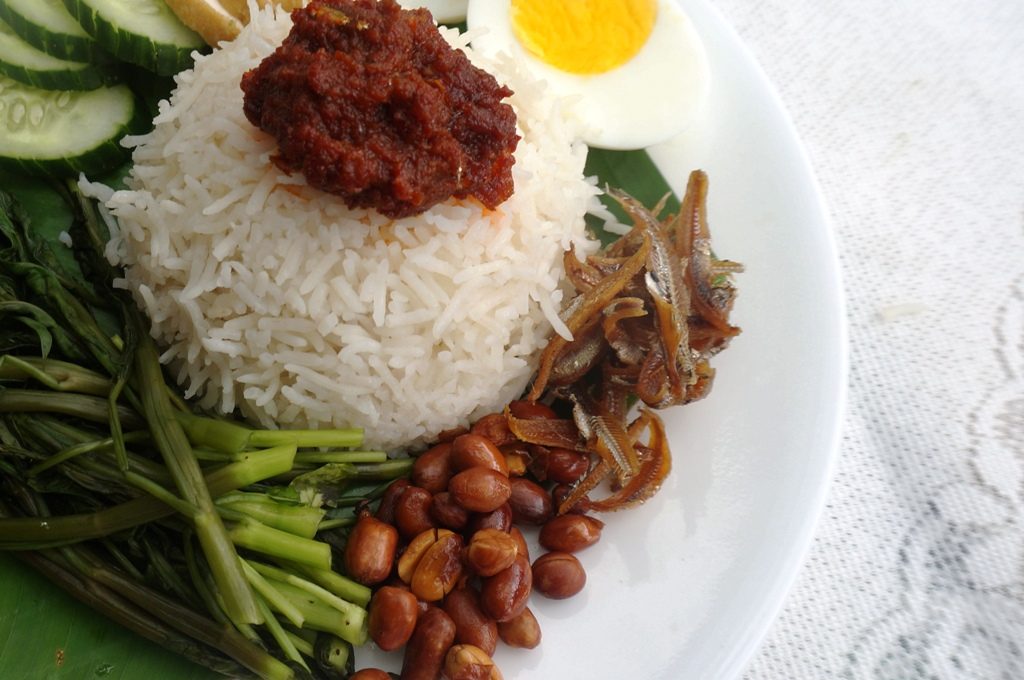
Malaysia is a paradise for food lovers. Thanks to her people of many cultures, you won’t find yourself wanting for variety when it comes to food. Be it Chinese, Malay, Indian or even fusion, Malaysia has all kinds of flavours to explore.
If you are new to Malaysian cuisine, we recommend that you start with the classics. Maybe it’s the simplicity of the dish or the combination of flavours, but both locals and tourists just cannot get enough of them. We’re talking about roti canai, mie curry, nasi lemak etc etc… In fact, there are some of us who are willing to travel overnight just to get a hold of a really good one of these dishes!
Malaysian’s No. 1 Breakfast Dish
What do you think is Malaysia’s favourite breakfast? If your answer is roti canai and teh tarik or kaya-covered toast with two soft-boiled eggs, drenched generously with light soy sauce and pepper, that’s a good answer but we’re sorry, your answer is wrong. The correct answer is Nasi Lemak.
Now, nasi lemak is a dish that consists of fluffy, hot rice, cooked with coconut milk and served with an array of condiments. The most common condiments are a scoop of spicy sambal, fried crunchy anchovies, sliced cucumber and roasted peanuts. The flavours are just right and not too heavy that they overpower each other. A beautiful fusion of sweet, spicy, salty and what we call ‘lemak’ from the coconut. Yummm!
If you want to get really old school, then traditionally nasi lemak is also served with a side of blanched vegetable such as water spinach or kangkung. The addition of the water spinach somehow balances out the richness of the dish and does not make you feel heavy afterwards.
If you wish to try the traditional way of eating nasi lemak, we have the recipe below to help you prepare it, step-by-step.
Ingredients:
a) Sambal
- 15g of dried anchovies
- 30g of dried chillies, cut and de-seed
- 50g (3 small-sized) shallots
- 7g (5 cloves) garlic
- 2g of shrimp paste (optional)
- 60g of tamarind juice
- 2 teaspoons of salt
b) Coconut Rice
- 2 cups of rice
- 3 1/4 cups of second-pressed coconut milk (equals to 1 tin of coconut milk mixed with 2 1/4 cups water)
- 1 teaspoon of salt
- 1 pandan leaf, knotted
c) Condiments
- 1 cucumber, sliced
- 1 bunch (320g) of water spinach
- 3 medium-sized hard-boiled eggs
- 2 (170g) tofu
- 35g dried anchovies
- 100g of peanuts
Method:
a) Coconut Rice
1.In a pot, wash the rice thoroughly til water is slightly clear.
2. Pour the rice into the rice cooker, along with the pandan leaf and coconut milk.
3. Add in 1 teaspoon of salt and stir to combine everything together.
4. Switch on the rice cooker and let the rice cook. Once the rice is cooked, use a fork to fluff the rice gently.
b) Sambal
1.In a mixer, add in the cut up dried chillies, shallots, garlic and shrimp paste. Add in 3/4 cup of water. Blend til smooth.
2. In a pan, heat 1/2 cup of oil on medium heat and wait for 3 minutes for the oil to be hot enough.
3. Pour in the sambal paste and stir continuously for 5-7 minutes until there is a layer of oil rising on the surface of the sambal.
4. Add in 1 teaspoon of salt and 2 tablespoons of sugar. If the sambal taste is a little bland, add 1 teaspoon more. The sugar is added if you like some sweetness to your sambal. If not, omit it.
5. Stir the sambal continuously for another 5-7 minutes until sambal is fully cooked. In order to know whether the sambal is cooked or not, look at the colour. If the sambal has turned into a darker shade of brownish red, it is ready. You can also check by tasting it. If the chilli has a slight bitterness to it, let the sambal cook for another 3-5 minutes.
6. Once the sambal is cooked, add in the tamarind juice and dried anchovies.
7. Stir the sambal and let the sambal simmer for another 5 minutes.
c) Condiments
1.In a deep-bottomed wok, put 1 cup of oil and heat it on medium flame. Wait til the oil has become hot enough.
2. Place the tofu inside and fry for 5 minutes until all sides turn golden brown.
3. Remove the tofu and in the same oil, fry the peanuts for 5 minutes. To taste the doneness of the peanuts, take one out and let it sufficiently cool before biting into it. If it is soft to bite, the peanuts are done.
4. Remove the peanuts and put in the anchovies. Fry for 5-10 minutes until anchovies turn golden brown and crispy. In order to know if the anchovies are ready, the oil will stop popping and small bubbles will form around the fried anchovies.
5. Fill a pot with water til it fills 1/2 of the pot. Put in 1 teaspoon of salt and stir to mix. Heat the pot of water on medium high flame until the water is boiling.
6. Take the water spinach and immerse the leafy parts into the boiling water for 1 minute. Take it out when the leaves have softened sufficiently. Check the softness of the immersed leaf stalks to know if the leaves have been blanched enough.
Eat Nasi Lemak the Malaysian Way!
Look how easy it is to prepare nasi lemak! With just common ingredients, you can make something extraordinary. That’s the beauty of this dish.
If you give this recipe a try, don’t forget to let us know what you think of it by taking a beautiful picture of your results. Do tag us with a #butterkicap, either on Instagram, Facebook or even Twitter.
Happy cooking!

